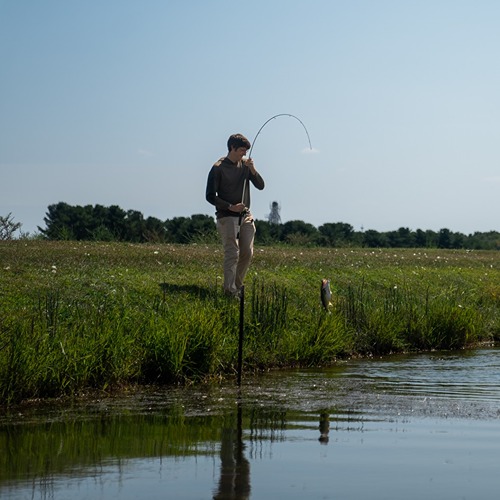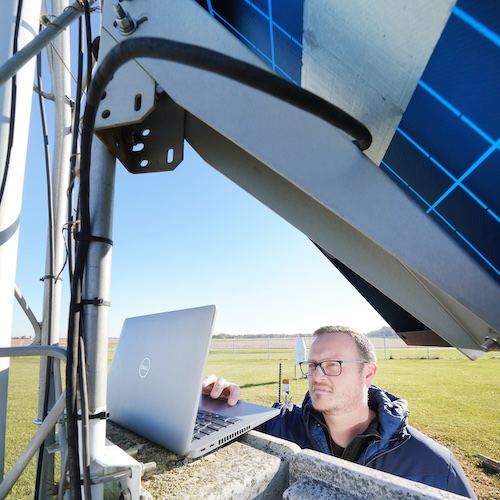Purdue awarded $10 million for #DiverseCornBelt project
A $10 million project seeks to make Midwestern agriculture more resilient by diversifying farms, marketing and the agricultural landscape.
We’ve all heard of hedging a bet or diversifying a portfolio to be able to weather ups and downs, and this is the same concept, said Linda Prokopy department head and professor of horticulture and landscape architecture at Purdue University, who leads the project.
“What’s new is that market and environmental research tailored to this part of the U.S. will inform our next moves, and individual farmers and stakeholders will be involved in every step of the process,” she says. “Growing only a rotation of corn and soybeans is not necessarily sustainable economically, environmentally or socially. We will be working with farmers in Indiana, Illinois and Iowa to evaluate alternative cropping systems that can be used in the Midwest – we will be evaluating small grains and/or forage crops in rotations, perennial forage or bioenergy crops, agroforestry, horticultural food crops, and grazed livestock.”
The USDA National Institute of Food and Agriculture selected the project titled “#DiverseCornBelt: Resilient Intensification through Diversity in Midwestern Agriculture,” which has a multidisciplinary team that spans the life, physical and social sciences.

Through research, Extension and education activities, the #DiverseCornBelt team will build resilient intensification through diversity at the farm, landscape, and market levels that ensures needs of diverse people are met.
”This project draws upon the talents of our faculty and can make a crucial contribution to diversifying Midwest agriculture. The lessons learned can benefit farmers throughout the region,” said Karen Plaut, the Glenn W. Sample Dean of Purdue’s College of Agriculture.
The team pulls expertise from across Purdue Agriculture. In addition to Prokopy, Purdue professors on the team include Shalamar Armstrong, associate professor of agronomy; Steve Hallett, professor of horticulture and landscape architecture; Ian Kaplan, professor of entomology; Sarah LaRose, assistant professor of agricultural education; Elizabeth Maynard, clinical engagement associate professor of horticulture; Aaron Thompson, assistant professor of horticulture and landscape architecture; and Ariana Torres, associate professor of horticulture and landscape architecture and agricultural economics.
Entomology professor Ian Kaplan specifically addressed the biophysical research component of the project.
“We are planning to collect large-scale field data across a wide range of cropping systems in the Corn Belt region—from Indiana to Iowa—that vary from traditional corn monocultures to highly diversified farms. This sampling effort will test how diversification practices at realistic spatial scales impact biophysical variables important to farmers. For example, we anticipate collecting data on soil health, water quality and insect biodiversity. By measuring these variables across three states, we will be able to understand how the implementation of specific farming practices simultaneously affects agroecosystem function, crop yields and long-term sustainability.”
Stakeholder listening sessions, surveys and interviews will also inform the five-year project, Prokopy said.
“We will examine the environmental costs and benefits of diversified systems through on-farm research, as well as identify economic and social barriers to change. The COVID-19 pandemic showed us the lack of resilience in our current system and how farmers suffered because of it,” she said. “We hope such pandemics will be rare, but, unfortunately, we can’t say the same about climate change. There will be challenges ahead and we must prepare for the future. We hope this project will bring together farmers, researchers and the agri-food community to figure out how.”
Letters of support for the team’s proposal came from farmers, industry, academic institutions and environmental organizations, including General Mills, Smithfield, Kellogg’s, Red Gold, the Indiana Agriculture Nutrient Alliance, the Indiana State Department of Agriculture, National Association of Conservation Districts, the Hoosier Young Farmers Coalition, the Iowa Soybean Association and the National Wildlife Federation.
#DiverseCornBelt’s Extension program will support farmers and local markets as they transition to a more diverse environment.
“We don’t know what kinds of diversification this project will identify as the most promising, but the Extension team will be ready to get the word out, help stakeholders evaluate the findings, and provide resources needed to make changes for a more sustainable Midwest agriculture,” said Elizabeth Maynard, Extension specialist and clinical engagement associate professor of horticulture and landscape architecture.
The project also will engage the future workforce through educational modules and immersive learning experiences.
“Students will take field courses where they travel together and learn how to create a sustainable system,” Prokopy said. “It is like a study abroad course, but across the region. Students will learn from farmers, market organizers and researchers to gain a better sense of the entire agricultural system.”
Partner institutions on the project include the American Society of Agronomy, Conservation Technology Information Center, Sustainable Food Lab, USDA Economic Research Service, USDA Forest Service, Illinois State University, Iowa State University, Montana State University, The Nature Conservancy, Practical Farmers of Iowa, University of Illinois at Urbana-Champaign, University of Iowa, University of Minnesota, and University of Wisconsin Madison and Platteville.
Farmers, agricultural advisors and marketers, community leaders, and landowners, interested in participating in the project through surveys, interviews and stakeholder listening sessions should contact Linda Prokopy.
The U.S. Department of Agriculture’s National Institute of Food and Agriculture (Project No. 2021-68012-35896) funded this work.





